Disclaimer: This page contains affiliate links. If you make a purchase from one of the links, Habitot will earn a small commission at no extra cost to you.
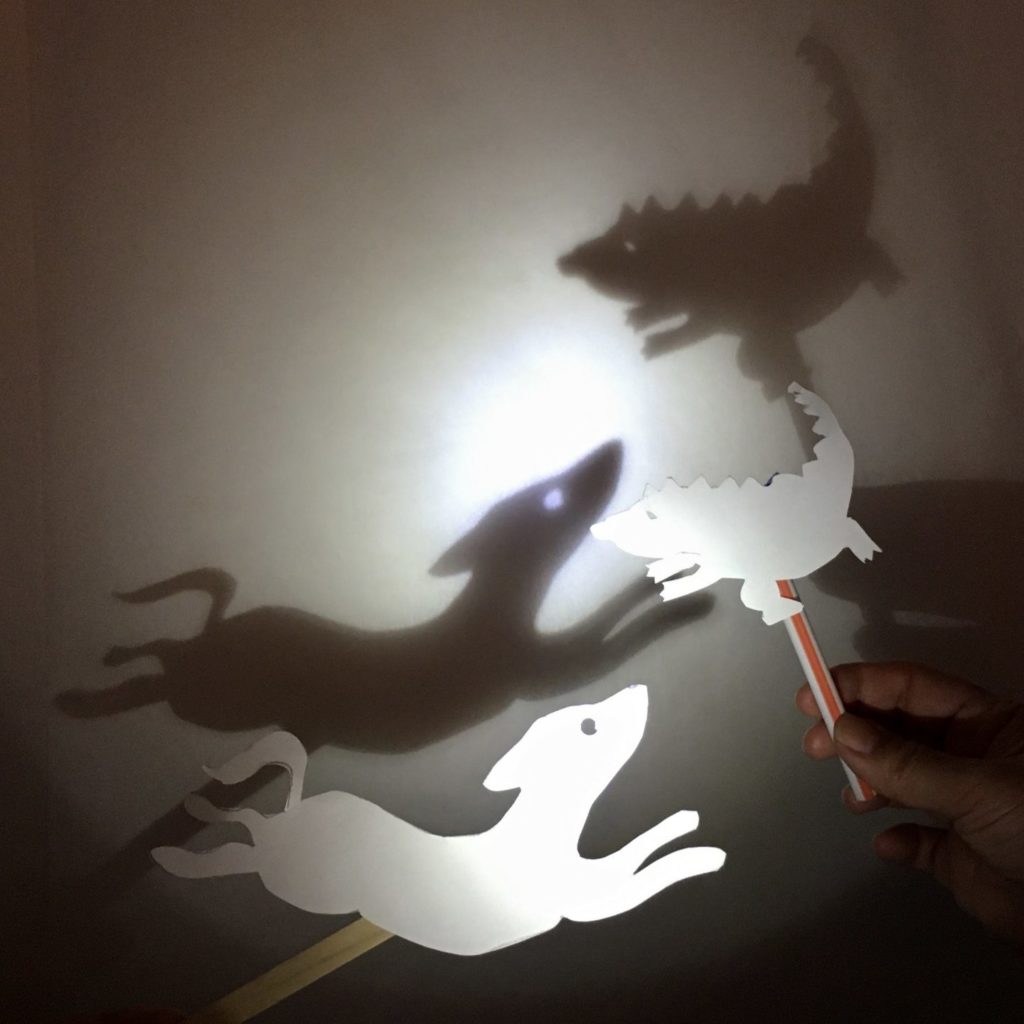
Shadow puppetry has been around for thousands of years, particularly in Asia. Inspire your child’s storytelling and encourage early learning about the science of light and shadows by making homemade shadow puppets together. Learn more about traditional Chinese Shadow Puppetry here.
What We’re Learning & Skills We’re Building
- Storytelling – coming up with characters, settings, and plot lines for a puppet show
- Fine motor skills – using the small muscles in the hands and arms to draw, grasp scissors, and hold puppets on sticks
- Early science: light and shadows – when light is projected toward an object, the object will cast a shadow onto a wall/surface
- Creativity – using your imagination to come up with and decorate puppet characters
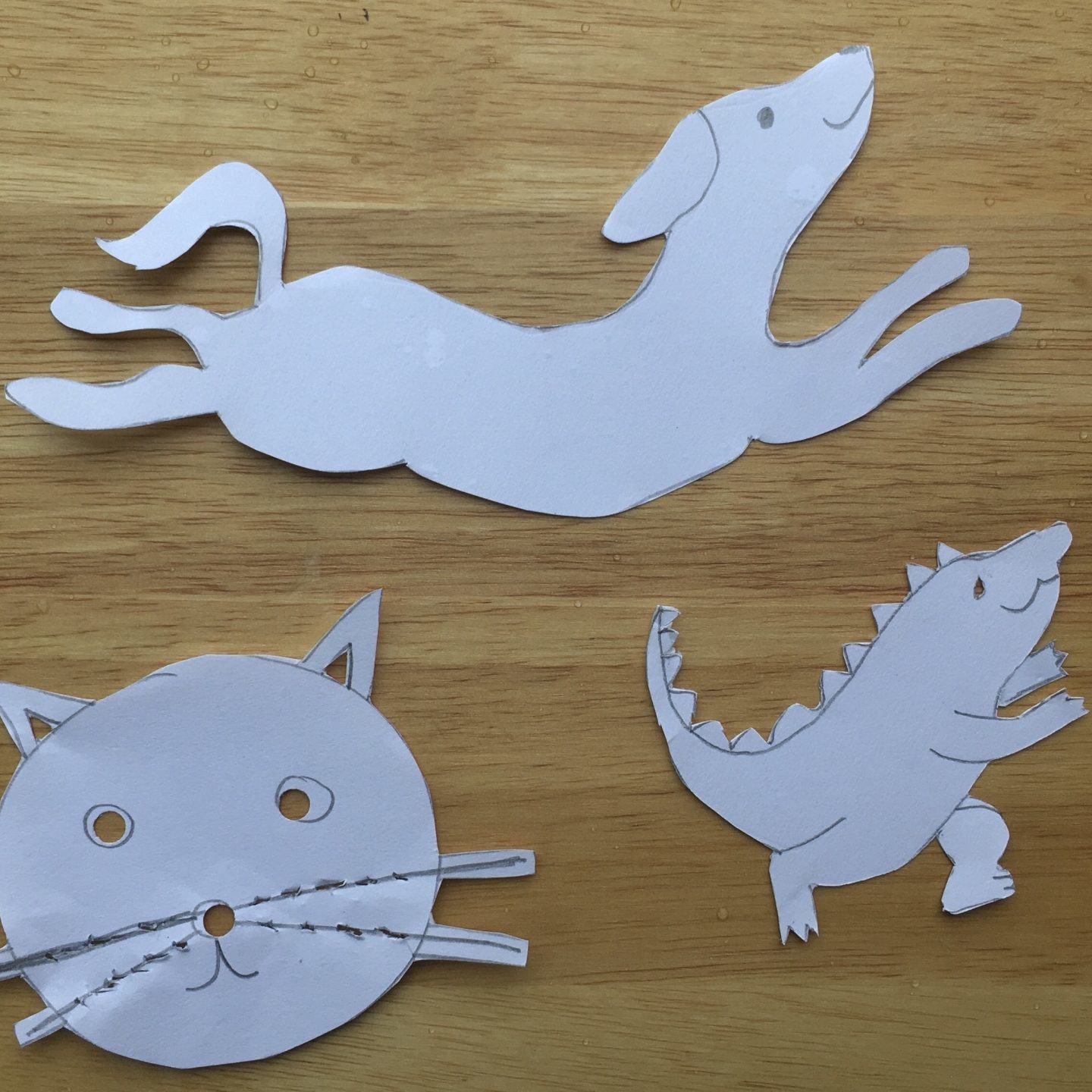
Materials
- Card stock, thin cardboard, or old greeting cards
- Craft sticks or popsicle sticks
- Non-toxic washable markers or crayons
- Child-safe scissors
- Masking tape (including the masking tape roll)
- Flashlight
- Something to prop up the flashlight like a table, a stool, or a cardboard box
- Blank or light-colored wall or projection screen
Optional Materials
- Hole punch
- Translucent blocks or toys
- Colored cellophane, wax paper, plastic sheets, or cutouts
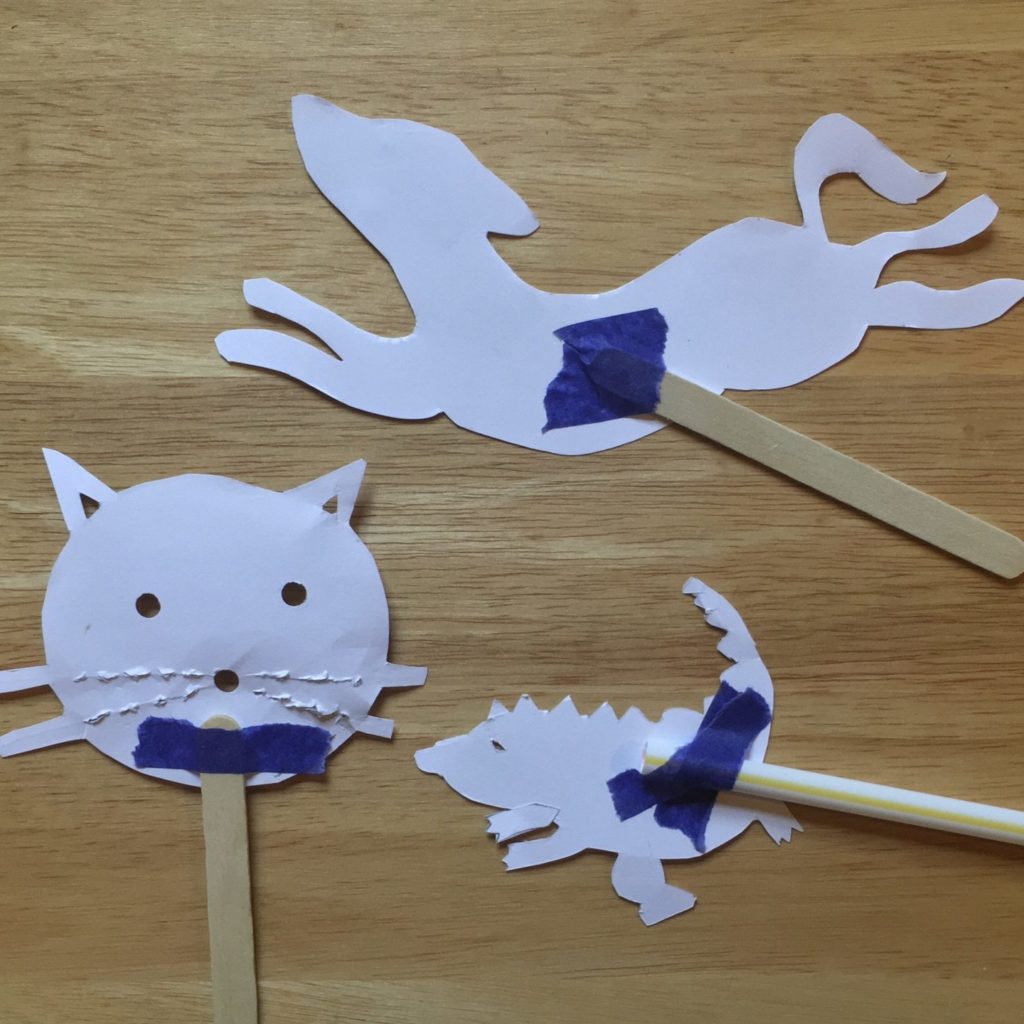
Making the Puppets
- Talk with your child about what characters or objects they’d like to make for their puppets. Look for simple character templates online. Ask, “Is there a story you’d like to tell using the puppets? What characters are in the story?”
- Help your child draw puppet characters and/or objects on card stock, thin cardboard, or on the backs of old greeting cards. If they’d like, they can use tools (a hole punch, for example) to add details. Decorations can also be added, though they won’t be seen when the puppets are being used to cast shadows.
- Cut out the characters/objects from the card stock.
- Use 1 to 2 tape loops to attach the puppets to the popsicle sticks (about 1.5” from the tops of the sticks, leaving enough space for your child to grasp them).
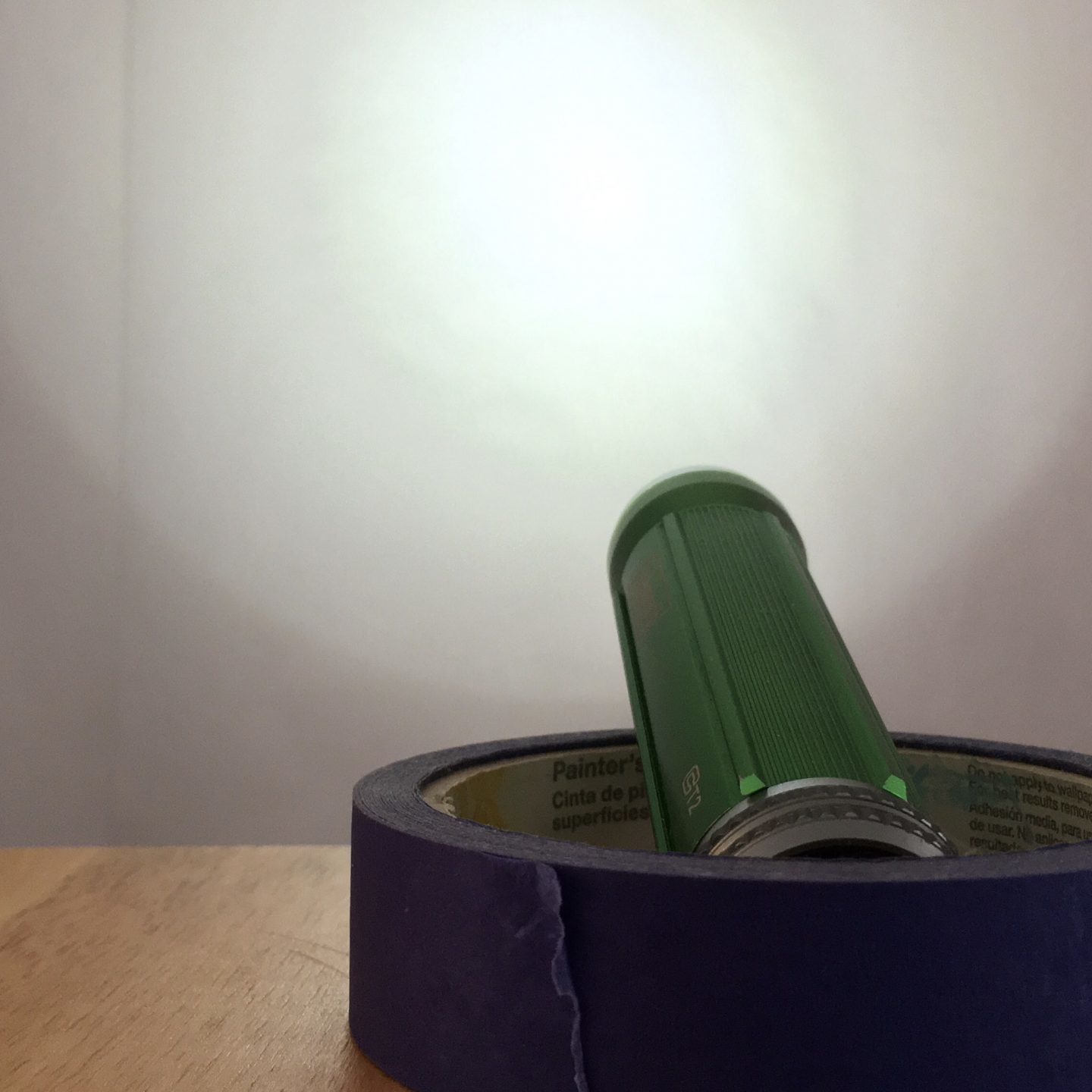
Casting Shadows with the Puppets, and More Exploration
- Create a platform for propping up the flashlight using a table, a stool, or a medium-sized cardboard box. Face this platform about 2-5′ away from a blank wall (the height and distance of the platform can be changed — a fun experiment for later in the activity).
- Place a roll of masking tape (or a bowl or other container) on top of the flashlight platform. Then, place the flashlight in the center of the tape roll (or bowl or other container) so the light is facing the blank wall, angled slightly upward (the height and/or angle might need a little adjusting).
- With the flashlight turned on, have your child hold the puppets up in front of the flashlight beam to project their shadows on the wall.
- Encourage your child to experiment with how close or far they’re holding the puppets from the flashlight. Ask, “What happens to the shadows when you move the puppets closer to the flashlight? What happens when you move them closer to the wall?” Let your child explore moving the puppets around in front of the light with little direction.
- Experiment with colored transparent or translucent sheets and/or objects in front of the flashlight. This is a good opportunity to teach scientific vocabulary: transparent means light can pass completely through something, while translucent means only some light can pass through.
- Have your child try to make shadow “puppets” using only their hands and bodies. Check out these fun ideas!
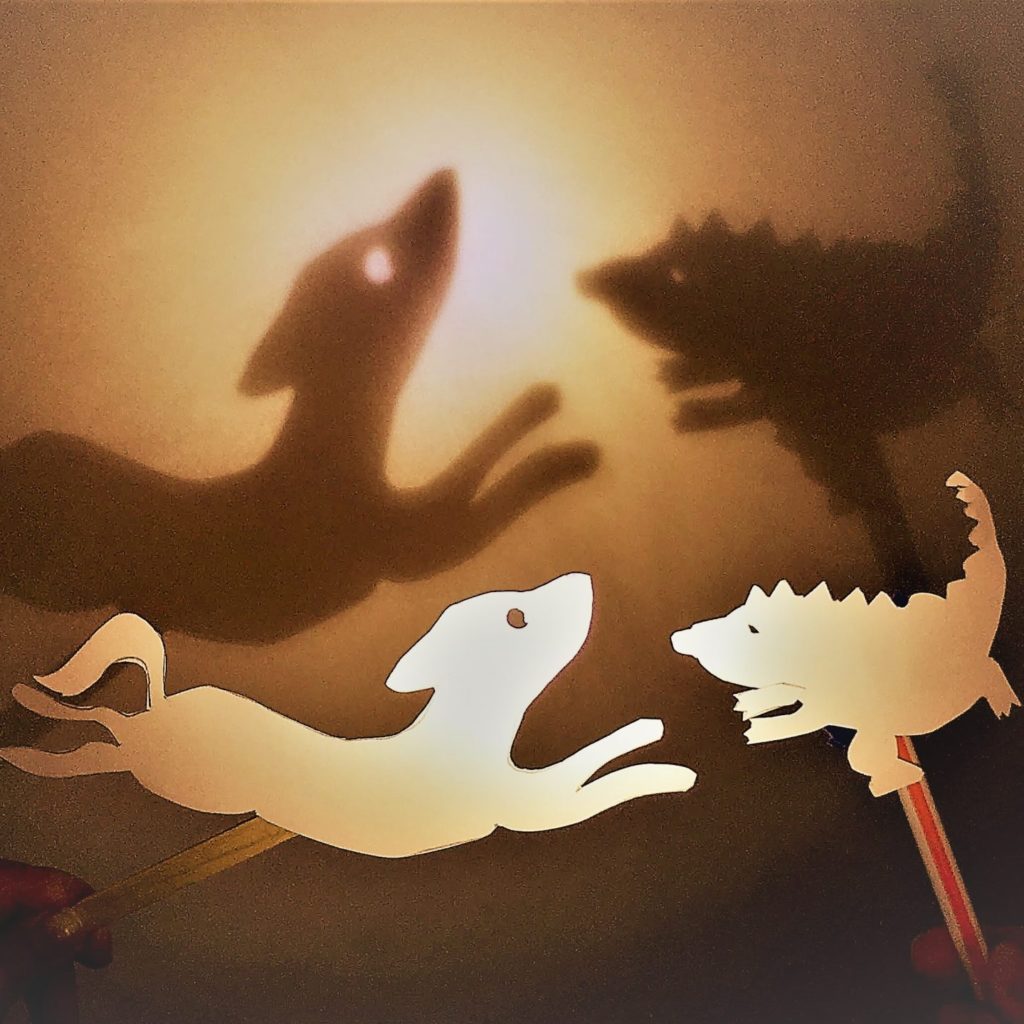
Storytelling with the Shadow Puppets
You and your child can put together a shadow puppet show using your own stories, or you can take inspiration from a favorite book. (We were inspired by the book A Carousel Tale by artist and writer Elisa Kleven.) You can enhance your storytelling by creating sound effects with your voices, or by getting help from other family members to make sound effects (ringing bells, roaring, stomping, or singing, for example). And for other details such as designing a backdrop or a set, your child can create buildings, clouds, and trees.
To see the “Jack in the Beanstalk” story performed via shadow puppetry, watch this production by a group of 6-9 year-olds.

